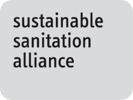Effizienz und Nachhaltigkeit des sanitären Versorgungskonzeptes der Stadt Gitega, Burundi (in German) Efficiency and sustainability of the urban sanitation concept in Gitega, Burundi Kölsch, B. (2012)
Bibliographic information
Kölsch, B. (2012). Effizienz und Nachhaltigkeit des sanitären Versorgungskonzeptes der Stadt Gitega, Burundi (in German) Efficiency and sustainability of the urban sanitation concept in Gitega, Burundi MA thesis, Fakultät Bau-Wasser-Boden, Ostfalia, University of Applied Sciences, Wolfenbüttel, Germany
Filter / Tags
Constructed wetlandsFaecal sludge treatment processesUrban (entire city)German
Downloads
Effizienz und Nachhaltigkeit des sanitären Versorgungskonzeptes der Stadt Gitega, Burundi
Type: application/pdf
Size: 2.13 MB

